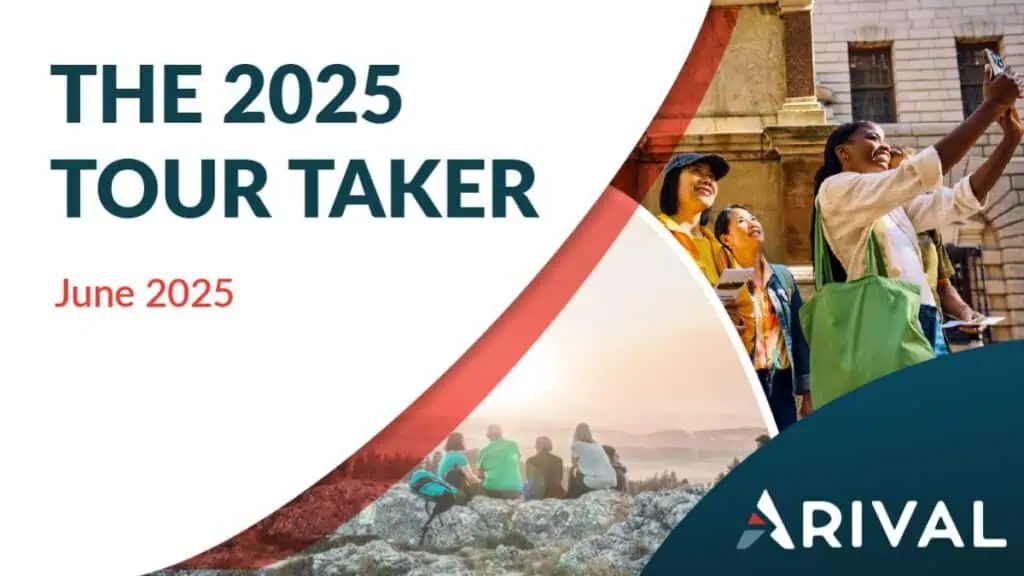Having your own website is a necessary tool to be found by potential customers searching for things to do at a certain destination.
Ultimately, the company website is the most common touchpoint with customers. It represents your offers, brand and inspires travelers to book with you.
What a good tour operator website should look like
Your website should deliver a great user experience. You can achieve that by creating easy-to-navigate pages, visually attractive with clear communication.
Easy to navigate website
- It’s responsive, works fine on big and small screens
- It has a navigation menu with links to the main pages
- Visitors can access any page in a matter of seconds
- It has call-to-actions strategically placed indicating which actions the visitor should take next
Visually attractive website
- The layout is clean. It has a balance between images, text, and empty space.
- The hero section has a video or image showcasing your destination, customers enjoying your experience, and your team.
- It contains text that is easy to digest (short paragraphs)
- It’s filled with eye-catching images
Clear website
- Prices are visible and understandable
- It has social proof of your experiences
- It answers three questions: Who are we? What do we do? Why should you choose us?
- It contains detailed descriptions of your tours and activities
3 Tools for building a tour operator website
There are different website builders on the market. Nowadays, those tools are intuitive and visual, making it simple for non-programmers to build a website from scratch in a couple of hours.
Among all the options, three tools stand out.
Squarespace
Squarespace is known for its clean and professional layout. It also has high-quality designed templates suitable for travel and tour websites.
Other highlights of this platform are great customer support, a responsive editor to build mobile-friendly websites, a good photo editor, a fair amount of add-ons, and in-app tools.
A downside is that you don’t have the same freedom as other solutions in the market when it comes down to design personalization. Squarespace isn’t the easiest solution to use as well.
The base plan costs $12 per month in an annual plan.
Wix
Wix is one of the most popular website builders in the market. Probably because it has a free plan and it’s straightforward to use.
Creating a website with it is very simple using its drag and drop functionality. Ideal for beginners with no experience in coding.
It also gives users the freedom to change the website design. You start with a basic layout and can customize it to suit your needs.
Despite being very popular, Wix does have a few drawbacks.
It limits the maximum amount of data you can store; it doesn’t matter if you are a free or premium user. That can be a deal-breaker for tour operators who want to upload many pictures and high-quality videos of their tours.
Also, its flexibility can be overwhelming if you are not up to spending hours creating and adjusting your website design.
Tour operators should go for the premium version of Wix. It costs $12.50 per month and is free of ads.
WordPress
Around 40% of the internet is built on WordPress. It’s so popular because it’s easy to use and it is highly customizable.
There are two different systems under the brand WordPress, and they are WordPress.org and WordPress.com.
The first one is an open-source content management system (CMS). It requires technical knowledge from the user, but it’s free to use and highly customizable.
On the other hand, WordPress.com is a paid website builder. It has similar functionalities to Squarespace and Wix, which makes it user-friendly.
Both have countless themes and plugins available to buy or download for free. For sure you can find one that is suitable for your needs.
WordPress.com has plans starting from $7 per month. For more customization and extended functionalities, you should choose the business plan.
Turning your website into a sales channel
More than a business card, your website can be a 24/7 seller for your business.
Imagine a visitor that has found your company on Google when searching for an experience provider at your destination. This visitor is ready to make a reservation but out of your commercial hours. If the only way to book with you is through direct contact, the chances are that the visitor will choose your competitor instead of you.
To not lose this customer, you would need a booking software integrated with a payment gateway, plus a ‘book now’ button placed on your tour pages.
On top of that, a seamless checkout is the last detail for a successful online purchase. For that reason, make sure to choose a complete solution like Orioly that gives you all those features.
Conclusion
A tour operator website is a powerful sales channel. Many still prefer relying on OTAs to sell online despite their higher commission.
There are different builders available for you to create your website. Just remember that great user experience, high-quality images, and relevant text are the perfect combination for a winning website. The final touch is integrating it with a booking engine. Once that is completed, you are ready to turn visitors into paying customers.

















